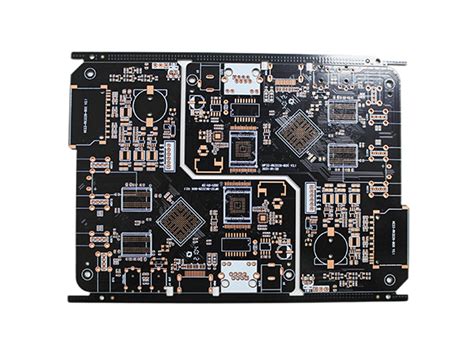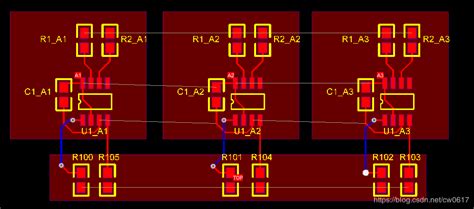Unlocking Efficiency: Innovations in 4PCB Assembly Techniques
Key Takeaways
As the landscape of pcb assembly continues to evolve, understanding the latest advancements is crucial for manufacturers aiming to maintain a competitive edge. The introduction of pcba innovations has not only optimized the efficiency of assembly processes but has also significantly enhanced precision throughout production. Techniques such as surface mount technology and advanced soldering methods have revolutionized how components are integrated onto circuit boards, facilitating quicker assembly times and reducing errors. Moreover, implementation of state-of-the-art inspection systems, including automated optical inspection, ensures that quality control remains paramount in manufacturing processes. As companies embrace these technological advancements, they are likely to see a reduction in waste and an increase in overall productivity. Hence, staying informed on these 4PCB assembly trends is essential for any organization looking to thrive in a dynamic production environment.
Introduction to 4PCB Assembly: Understanding the Basics
In the rapidly evolving world of electronics, 4PCB assembly has become an essential process for creating compact and efficient devices. Printed Circuit Board Assembly (PCBA) refers to the integration of various electronic components onto a printed circuit board (PCB), transforming a simple board into a fully functional piece of technology. Understanding the fundamentals of 4PCB assembly is crucial for anyone involved in electronics manufacturing, as it significantly influences the quality and reliability of the final product.
At its core, 4PCB assembly involves multiple layers stacked to accommodate densely packed circuitry, catering to the modern demand for smaller and more sophisticated gadgets. These assemblies utilize various techniques, such as surface mount technology (SMT) and through-hole technology, both playing vital roles in ensuring that components are accurately placed and soldered onto the PCBA.
The growing complexity of electronic devices has made precision in pcb assembly more critical than ever. As products require higher speeds and greater functionality while varying in size, employing effective methods in assembly becomes equally paramount. Recent innovations have introduced automated systems that enhance production rates while minimizing human error — ultimately driving improved quality assurance across assemblies.
| Key Components | Role in 4PCB Assembly |
|---|---|
| Surface Mount Components | Placed on top surfaces; allows for efficient use of board space |
| Through-Hole Components | Inserted into drilled holes; provides robust connections |
| Solder Paste | Accurates adhesion of components during SMT processes |
| Inspection Systems | Ensures quality control through real-time monitoring |
This layered approach not only emphasizes efficiency but also highlights how advancements are shifting traditional methods towards smarter techniques. With ongoing developments in materials and processes, understanding these foundational aspects can lead to significant improvements within any PCBA project. The journey towards optimizing layouts and enhancing performance starts here, paving the way for innovative applications and superior products in today’s tech landscape.
Recent Innovations Transforming 4PCB Assembly Techniques
In today’s rapidly evolving electronics landscape, recent innovations in 4PCB assembly are reshaping how manufacturers approach the assembly process. One key area of transformation is the integration of advanced automation technologies that streamline workflows and minimize human error. Automation not only accelerates production speeds but also enhances accuracy in soldering and component placement, ensuring higher reliability in the final product. Furthermore, cutting-edge pcba methodologies are being utilized to employ more sophisticated inspection systems capable of detecting defects at unprecedented levels. These innovations lead to improved quality control and ultimately boost customer satisfaction.
The utilization of new materials also plays a crucial role in redefining 4PCB assembly techniques. For example, the advent of flexible printed circuit boards allows for unique designs that can conform to the spatial constraints of various products. As a result, manufacturers can produce products that are not only lighter but also more efficient in terms of space utilization. Alongside this material innovation, embracing low-temperature soldering techniques reduces thermal stress on components, extending the lifespan and functionality of electronic devices.
Moreover, collaborative robots—often referred to as cobots—are increasingly becoming integral to pcba processes. They work alongside human operators to perform repetitive tasks while allowing for greater precision in sensitive assemblies. This collaborative approach exemplifies how innovation is driving a shift towards more efficient production processes without compromising on quality or their custom needs.
These combined advancements reflect a significant leap forward for the industry, setting new benchmarks for efficacy and precision in 4PCB assembly techniques while paving the way for more sustainable manufacturing practices as companies strive to meet rising demands. As these innovations continue to unfold, they herald a promising future for pcb assembly, enhancing productivity and quality across various sectors within electronics manufacturing.
Advanced Technologies Driving Efficiency in 4PCB Manufacturing
In the ever-evolving world of 4PCB assembly, advancements in technology play a crucial role in enhancing production efficiency and precision. Techniques such as automated optical inspection (AOI) and surface mount technology (SMT) have transformed how pcba processes are conducted, ensuring higher quality outputs. The integration of robotics and machine learning into the assembly lines has not only reduced human error but also accelerated production rates significantly. For instance, the adoption of modular assembly equipment allows for flexible configurations to accommodate different project scales, ultimately making pcb assembly more adaptable to changing demands. Furthermore, advancements in materials science have led to the development of new substrates that are not only lightweight but also more durable, further improving overall efficiency. By leveraging these innovative technologies, manufacturers are better positioned to meet the stringent requirements of modern electronics while driving down costs and shortening lead times. The continuous evolution of methods within 4PCB manufacturing promises even greater efficiencies and superior product quality as these technologies advance further.
Best Practices for Enhanced Precision in 4PCB Assembly
Achieving precision in 4PCB assembly is critical to the overall success of electronic devices. Implementing best practices starts with selecting high-quality materials, such as reliable substrates and components, to ensure that the assembly process is built on a solid foundation. Moreover, thorough planning and design optimizations play crucial roles; utilizing advanced design software can help identify potential issues before the production phase begins. Employing precise soldering techniques and ensuring that equipment is regularly calibrated contribute significantly to enhancing accuracy during manufacturing. Regularly training the workforce on the latest pcba methods can foster a culture of excellence, where attention to detail becomes second nature. The integration of advanced technologies, such as automated optical inspection (AOI), can detect defects early in the assembly process, reducing waste and saving time. In addition, establishing robust quality control measures throughout all stages of production ensures that any anomalies are addressed promptly, further solidifying the quality of the final product. By adhering to these best practices, manufacturers can elevate their 4PCB assembly processes, ultimately leading to superior outcomes in both efficiency and reliability.
The Impact of Automation on 4PCB Production Processes
The integration of automation in 4PCB assembly has significantly transformed the production landscape, driving enhancements in both efficiency and precision. By utilizing automated systems, manufacturers can streamline the pcba processes, minimizing human error while maximizing output speed. Automation technologies, such as robotic arms and advanced pick-and-place machines, allow for consistent placement of components on circuit boards, ensuring that even the smallest components are positioned with utmost accuracy.
Furthermore, automated inspection systems equipped with machine vision capabilities can quickly identify defects or discrepancies during the pcb assembly process. This early detection capability not only reduces waste but also shortens production cycles significantly by addressing issues before they escalate into larger problems.
“Incorporating automation into 4PCB production not only boosts productivity but also enhances overall product quality,” suggests industry expert James Lin.
As manufacturers continue to adopt these automated solutions, they will likely see substantial improvements in turnaround times and reductions in labor costs. The combination of automation and innovative technologies is driving the industry towards a future where high-quality pcba products can be produced more swiftly than ever before. Emphasizing the ongoing advancements in this field will be crucial for businesses aiming to remain competitive while meeting increasing market demands.
Case Studies: Successful Implementation of Innovative 4PCB Techniques
In recent years, the realm of 4PCB assembly has witnessed remarkable transformations due to innovative methodologies that enhance both efficiency and precision. One compelling case study involves a leading electronics firm that adopted an integrated pcba solution incorporating automated pick-and-place machinery. This not only streamlined the assembly process but significantly reduced cycle times, enabling quicker turnaround on projects. Another noteworthy example is a manufacturer that implemented advanced testing techniques at various stages of the pcb assembly process. By embracing real-time data analytics, this company could identify defects promptly, ensuring higher quality and reliability in their final products.
Furthermore, companies that have focused on optimizing their supply chain management alongside their pcba strategies have reported substantial logistics improvements. Emphasizing collaboration with suppliers and just-in-time inventory systems has allowed these manufacturers to minimize waste and maximize output. The integration of smart technologies, like IoT-enabled devices for monitoring equipment performance, has also played a critical role in fostering a proactive maintenance culture, ultimately preventing downtimes that can affect production efficiency.
These case studies exemplify how leveraging innovative 4PCB assembly techniques can lay the groundwork for not just operational improvements but also a competitive advantage in an increasingly fast-paced market. Such success stories underscore the value of adapting to new technologies and methods in achieving excellence within the PCB manufacturing landscape.
Future Trends in 4PCB Assembly: What to Expect
As we look toward the horizon of 4PCB assembly, several trends are poised to redefine the landscape of PCBA processes. The integration of Internet of Things (IoT) technology into the pcb assembly line is one significant advancement, enabling real-time monitoring and analytics that enhance quality control. This shift towards smart manufacturing will not only streamline operations but also reduce waste, leading to sustainable practices in 4PCB production. Furthermore, advancements in robotic automation are set to play a crucial role, optimizing precision in repetitive tasks while minimizing human error. The rise of flexible manufacturing systems will allow businesses to adapt quickly to changing market demands, ensuring that their pcba solutions remain competitive. Another trend is the increasing utilization of advanced materials that promote better thermal management and electrical performance in pcb assembly designs. As these innovations intertwine, the future of 4PCB assembly looks to be characterized by a harmonious blend of efficiency and enhanced capabilities, setting a new benchmark for quality and productivity in the industry.
Conclusion: Embracing Change in the 4PCB Assembly Landscape
As we conclude this exploration of 4PCB assembly techniques, it is evident that the landscape is evolving rapidly, driven by a relentless pursuit of efficiency and precision. The integration of advanced technologies such as automation and AI into the pcba process has transformed traditional practices, enabling manufacturers to optimize their workflows significantly. This not only enhances productivity but also leads to improved accuracy in assembly, reducing defects and promoting higher quality outcomes. By adopting best practices and staying abreast of innovative methods, businesses can gain a competitive edge in the market. Embracing change is not merely an option; it is a necessity for those aiming to thrive in the dynamic realm of pcb assembly. Looking ahead, organizations that leverage these advancements while remaining flexible will be well-positioned to meet the demands of an increasingly complex industry landscape. The commitment to continual improvement underscores the importance of adapting to new techniques, ensuring that the future of 4PCB assembly is bright and promising.
Conclusion: Embracing Change in the 4PCB Assembly Landscape
In recent years, the landscape of 4PCB assembly has undergone significant transformation, driven by innovative techniques and advanced technologies. As companies strive to increase throughput and maintain high-quality standards, the incorporation of automation and precision tools in pcba processes has emerged as a pivotal factor in achieving these goals. The latest advancements not only streamline production but also enhance flexibility, allowing manufacturers to respond swiftly to changes in market demands. By embracing new methodologies focused on efficiency, stakeholders can significantly reduce turnaround times while minimizing waste, leading to cost-effective solutions without compromising on quality. The emergence of smart manufacturing practices marks a new era for 4PCB assembly, where data-driven decisions and real-time monitoring ensure the highest standards are met consistently. As this field continues to evolve, it is imperative for professionals to remain adaptable, leveraging these innovations to drive their competitive edge in an increasingly complex market.
FAQs
What is 4PCB assembly?
4PCB assembly refers to the process of assembling printed circuit boards that contain four layers of circuitry. This technique enables greater functionality and density in electronic devices.
What advancements are influencing 4PCB techniques?
Recent advancements include automation, improved materials, and innovative soldering technologies that enhance pcba efficiency and reduce production times.
How do automation technologies affect 4PCB production processes?
Automation technologies streamline the assembly process, allowing for increased speed and precision in the placement of components, thus improving overall quality in pcb assembly.
What are some best practices for enhancing precision in 4PCB assembly?
Best practices include thorough design reviews, implementing quality control checks at each stage of pcba, and maintaining clean manufacturing environments to reduce contamination risk.
What can we expect in the future of 4PCB assembly?
In the future, we can anticipate further innovations such as advanced AI-driven solutions for handling complexities in pcb assembly, as well as enhancements in materials that increase the sustainability and performance of products.







